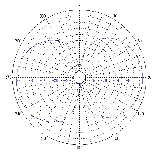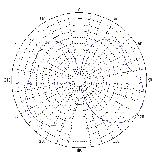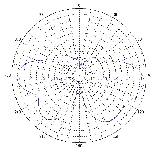Dual-band GSM/PCS Handset Antennas
Ace Antenna Co.
Chatsworth, CA
Today's new cellular telephone must be capable of operating in two distinct frequency bands to be compatible with the various operating systems it is likely to encounter. As a result, the unit's single-handset antenna must perform efficiently and effectively within both frequency bands. On the other hand, these antennas must be small to fit the profile of modern mobile handsets. The solution is a modified helix configuration.
While it is possible to match a given helical antenna to two distinct frequencies, the difference in the coil's capacitance at each frequency can be a difficult issue to deal with when trying to impedance match the antenna. For instance, a helical antenna tuned and matched to the digital communication system (DCS) at 1800 MHz has too much of a capacitive component at GSM frequencies. A new dual-band antenna set has been developed that uses a descending-pitch helical configuration, as shown in Figure 1 , to overcome this problem. A helix with two pitches may be tuned to have nearly the same impedance at both GSM and DCS frequencies at approximately 900 and 1800 MHz, respectively.
to deal with when trying to impedance match the antenna. For instance, a helical antenna tuned and matched to the digital communication system (DCS) at 1800 MHz has too much of a capacitive component at GSM frequencies. A new dual-band antenna set has been developed that uses a descending-pitch helical configuration, as shown in Figure 1 , to overcome this problem. A helix with two pitches may be tuned to have nearly the same impedance at both GSM and DCS frequencies at approximately 900 and 1800 MHz, respectively.
The Fixed Stubby Model
The model DHR-1992 fixed helical dual-band antenna utilizes a dual-pitch helical coil to operate in both the GSM and DCS frequency bands. At lower frequencies, the unit is matched as a quarter-wave l /4 antenna; at higher frequencies, it is matched as a half-wave l /2 antenna. The entire antenna is no longer than a typical stubby version even with its added functionality of dual-band operation. In addition, as a result of its single-piece design, the antenna is no more difficult or costly to manufacture than a typical l /4 monopole helical antenna.
In terms of performance, the DHR-1992 dual-band antenna is designed to operate from 824 to 894 MHz or 870 to 960 MHz and from 1.71 to 1.88 GHz or 1.85 to 1.99 GHz. The antenna has a nominal impedance of 50 W and an SWR of less than 1.9. Gain is 0 ±1 dB with an omnidirectional radiation pattern and vertical polarization. Figure 2 shows the antenna's radiation pattern at 880 and 1710 MHz.


The Retractable Model 
The model DHR-1991 retractable antenna combines a dual-pitch helical coil with a matching whip. In the retracted position, the antenna acts much like the fixed helical version. However, when extended, the coupling between the whip and the helix delivers added gain and bandwidth. The retractable antenna is similar in size to a typical bottom-loaded single-band retractable antenna. Figure 3 shows the antenna's configuration.
The DHR-1991 antenna is designed to operate in the same frequency bands as its DHR-1992 companion. As is the case for the fixed antenna, its impedance is 50 W with an SWR of less than 1.9 in the extended position and less than 2.5 in the retracted position. The antenna's gain is 0 ±1 dB and 1 ±1 dB in the retracted and extended positions, respectively. Similarly, its radiation pattern is omnidirectional and polarization is vertical. Figures 4 and 5 show the antenna's radiation pattern in both its extended and retracted positions for both 880 and 1710 MHz, respectively.




The models DHR-1991 and DHR-1992 antennas were developed originally for World Phone applications operating in both the GSM and PCS frequency bands. However, they can be easily adapted to GSM/DCS or AMPS/PCS configurations.
Ace Antenna Co.,
Chatsworth, CA
(818) 718-1534.
